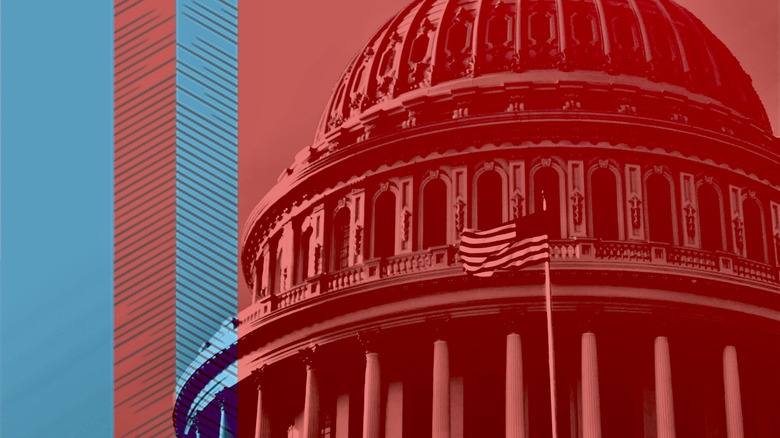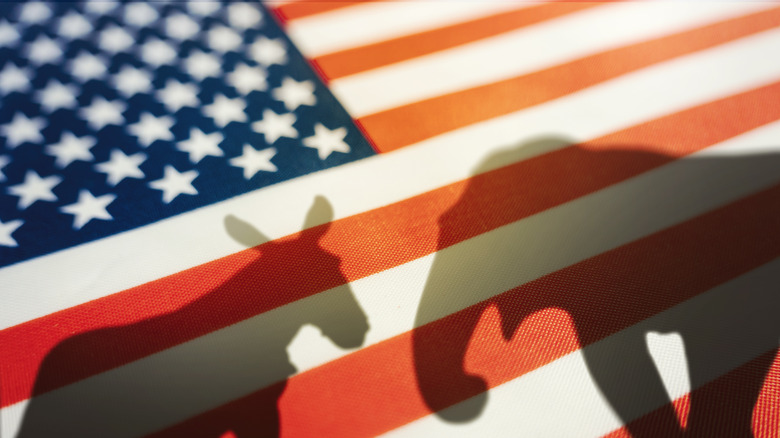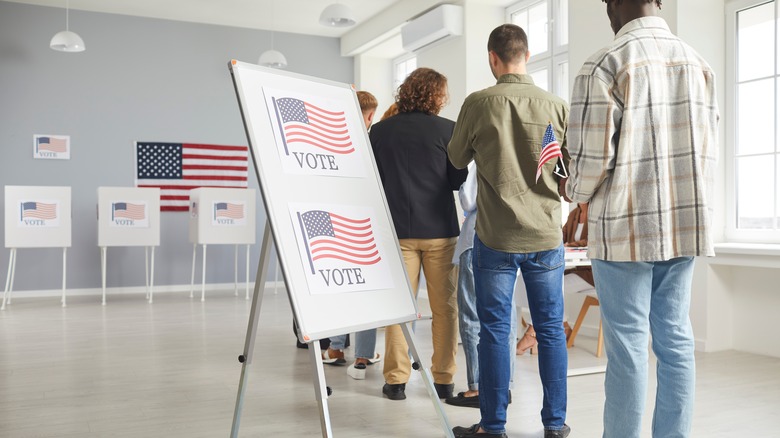The Average Income Of Republicans In The United States
While there has been much discussion surrounding how much the President makes, and even which members of Congress are the richest, there is generally less attention given to the constituents who elect these representatives. As party politics continue to escalate in increasingly polarizing ways, it's worth investigating how the incomes of Republicans and Democrats might differ, and by how much. This can be especially true when you consider that an individual's income could be a significant factor in how they vote.
Along with the idea that incomes affect voter preferences, certain characteristics are often seen as belonging to one party versus the other. As Patricia Crouse, adjunct professor at University of New Haven, explained to Forbes, "The Republican party is generally seen as those who are going to support business and Wall Street..." However, while there have always traditionally been long-standing fiscal positions associated with each party, these are increasingly becoming trademarks.
Crouse explained, "Many individuals in lower income brackets perceive Republicans as favoring the wealthiest 1% and large corporations rather than implementing policies that provide direct assistance to them." In fact, support for public programs that might assist lower income Americans — such as SNAP or Medicare — do tend to be favored by Democrats over Republicans. According to a 2025 Pew Research analysis comparing Democrat and Republican voter incomes, fewer low-income voters were likely to identify as Republican. In fact, just 36% of low-income voters (those with an adjusted income of less than $35,900 for a family of three in 2022) reported being Republican compared to 58% identifying with the Democratic Party.
Understanding Republican incomes
Other Pew Research data looking at political party affiliation and income found that middle-income voters (those with adjusted incomes between $47,900 and $143,600 for a family of three in 2022) were more likely to be Republicans. However, it's worth noting that the split was quite even, with just 51% of middle income respondents, and 52% of upper-middle income respondents, self-reported as Republican or leaning Republican compared to 48% and 46% reporting as Democrat, respectively. On the other end, 46% of low-middle income voters leaned Republican compared to 50% leaning Democrat.
While the traditional fiscal conservatism of Republican policies might lead you to believe that Republican voters would be the most likely to be counted among high income voters, the reality is less clear-cut. In fact, 53% of upper-income voters (those with an adjusted income of at least $215,400 for a family of three in 2022), leaned Democrat compared to 46% of high income voters who leaned Republican.
It's also worth mentioning how education can affect these political affiliations, not to mention the higher median net worth of those with college degrees compared to those without. 54% of voters without a college degree, who reported being lower or lower-middle income were Democrats versus 57% of voters without a college degree who reported as middle income, and 63% of upper or upper-middle income, associated with the Republican Party. However, looking at the larger picture, voters without bachelor's degrees overall tilted Republican. This diploma divide has only continued to increase over the last several national elections.
How income affects policy
Income differences between voters is also at the heart of the growing chasm between both parties on national policies. For example, what each party prioritizes has increasingly varied. As Bates College professor, Francesco Duina, explained to Forbes, "Research indicates that left-leaning Democrats in [the upper-income] group are post-materialists, prioritizing issues of identity and other social concerns over traditional economic matters. These affluent Democrats differ significantly in their priorities, focusing more on social justice and environmental sustainability, reflecting a distinct set of values compared to other segments within the party." This contrasts sharply with Republicans who increasingly prioritize tax cuts, and damaging programs like Social Security.
A Pew Research poll found that six-in-ten Democrats reported believing that the government should provide more assistance to those in need. On the flips side, 60 out of 100 Republicans reported that it was not the government's job to make sure people had healthcare. Healthcare serves as a particularly good example of the growing divide between parties, and how an individual voter's income level can affect their policy opinion — regardless of their affiliated party. For example, while most overall respondents believed that the government was responsible for ensuring healthcare coverage, those that were considered low-income were far more likely to say so — 73% — compared to upper and middle-income respondents at 63% and 62%, respectively.
To add to this, according to Debt.org, Republican candidates are more likely to earn a significantly higher percentage of votes from voters with incomes over $50,000, with a whopping 63% of individuals earning over $200,000 annually more likely to support Republican candidates.


